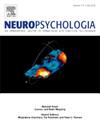虚拟现实中足球头球训练的行为和神经解剖学效应:纵向fMRI案例研究。
IF 2
3区 心理学
Q3 BEHAVIORAL SCIENCES
引用次数: 0
摘要
虚拟现实(VR)技术在过去几年中受到了相当大的关注,在许多性能领域得到了应用,包括与运动相关的心理和运动技能的训练。然而,VR训练对运动员潜在影响的确切心理和神经生物学机制在很大程度上仍然未知。本研究采用纵向功能磁共振成像(fMRI)技术对一名成年男性业余足球运动员进行虚拟现实足球头球训练后的行为和神经解剖学效果进行了研究。这项研究进行了8周,从预测试开始,然后是为期4周的VR训练阶段,在此期间,每周进行fMRI评估和第一次行为后测试。在额外的4周保留期后,进行最后的fMRI评估和第二次行为后测。现实生活中头球表现的实质性改善伴随着结构和功能性神经解剖学的改变。t1加权图像比较显示左侧丘脑GM体积增加,双侧小脑WM体积增加。此外,表面图像分析显示,右侧脑岛、左侧颞下回、左侧海马旁回、左侧舌回、左侧扣带后皮层、双侧扣带前皮层和内侧前额叶皮层皮质厚度增加。基于种子的静息状态fMRI数据的相关性分析显示,重要大脑网络内部和之间的功能连接增加了许多。这项研究为越来越多的关于运动员VR训练的文献做出了贡献,并提供了世界上第一个关于运动中VR训练效果相关神经可塑性的基本神经生物学机制的证据。本文章由计算机程序翻译,如有差异,请以英文原文为准。
Behavioral and neuroanatomical effects of soccer heading training in virtual reality: A longitudinal fMRI case study
Virtual reality (VR) technology has received considerable attention over the last few years, with applications in many performance domains including training of sports-related mental and motor skills. The exact psychological and neurobiological mechanisms underlying potential VR training effects in athletes, however, remain largely unknown.
The present longitudinal functional magnetic resonance imaging (fMRI) case study reports behavioral and neuroanatomical effects of VR soccer (a.k.a. football) heading training in a male adult amateur player. The study was conducted over 8 weeks, starting with a pre-test, followed by a 4-week VR training phase, during which weekly fMRI assessments and the first behavioral post-test were conducted. After an additional 4-week retention phase, the final fMRI assessment and the second behavioral post-test were conducted.
Substantial improvement in real-life heading performance was accompanied by both structural and functional neuroanatomical changes. The comparison of the T1-weighted images revealed an increase in GM volume in the left thalamus and an increase in WM volume in the bilateral cerebellum. Furthermore, the analysis of the surface images showed an increase in cortical thickness in the right insula, left inferior temporal gyrus, left parahippocampal gyrus, left lingual gyrus, left posterior cingulate cortex, and bilateral anterior cingulate and medial prefrontal cortex. The seed-based correlation analyses of the resting-state fMRI data revealed manifold increases in functional connectivity within and between important brain networks.
This study contributes to the growing literature on VR training in athletes and provides the world's first evidence on fundamental neurobiological mechanisms underlying neuroplasticity related to VR training effects in sports.
求助全文
通过发布文献求助,成功后即可免费获取论文全文。
去求助
来源期刊

Neuropsychologia
医学-行为科学
CiteScore
5.10
自引率
3.80%
发文量
228
审稿时长
4 months
期刊介绍:
Neuropsychologia is an international interdisciplinary journal devoted to experimental and theoretical contributions that advance understanding of human cognition and behavior from a neuroscience perspective. The journal will consider for publication studies that link brain function with cognitive processes, including attention and awareness, action and motor control, executive functions and cognitive control, memory, language, and emotion and social cognition.
 求助内容:
求助内容: 应助结果提醒方式:
应助结果提醒方式:


